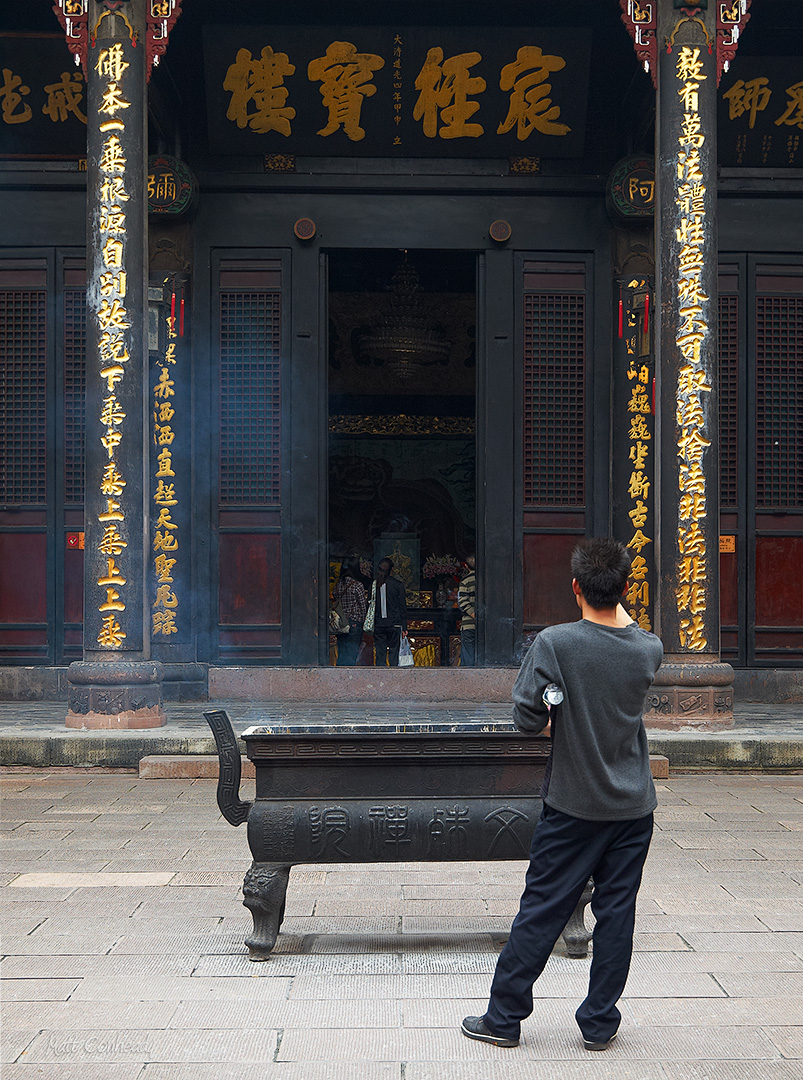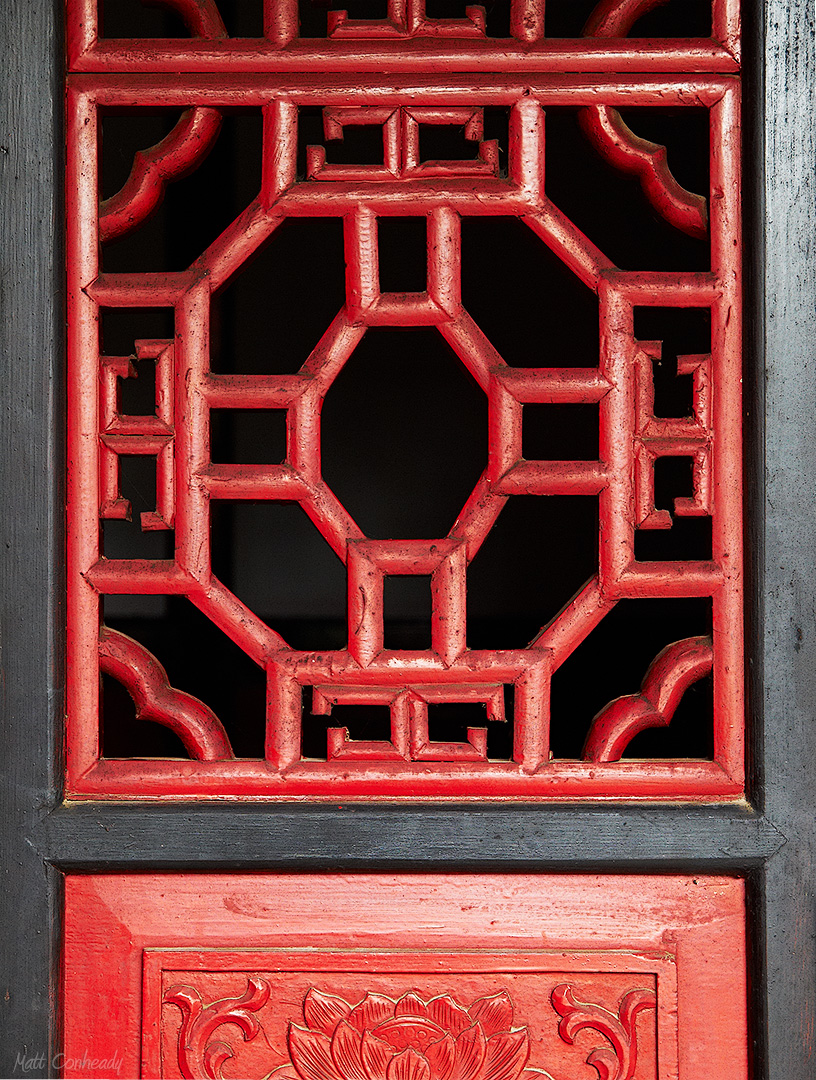Return to Chengdu

For my second trip to China, things are a bite more straightforward, more familiar, more comfortable. I replicate parts of my first journey for less culture shock when landing. I skip through Shanghai and land right back in Chengdu to meet with my good friend Jing and revisit my new favorite foods. This time, I visit in the fall. Little did I know, the center of my stay would overlap with a massive travel holiday.
Return to Sichuan
Sichuan Province is named for the 4 major river/gorge systems that run through this region. The name (四川) is essentially the number 4 and world for river. At least one of these rivers flows through the capital, Chengdu. The greater Chengdu area is about 17 million people. About 7 million are within the city.
Late Night Snack
I arrived in Chengdu very late and very hungry. Jing met me at the airport and we grabbed a taxi. We found a hole in the wall. Roaches… dirty chopsticks… everything had a nice layer of stickiness over it. Just not a place any tourist would ever go, even to ask for directions. Obviously family-run, this place has been handed down for generations. Their specialty: Sichuan home cooking. I just assumed I would get sick from whatever came out of the kitchen… may as well get some typhoid the first weekend and get it over with.
While waiting on the order, a man sat down at the tabel next to us for a nice big bowl of noodles and boiled pig feet. He then proceeded to put in a pair of clear plastic gloves. As soon as the finished adjusting the fingers of the gloves, the waitress set down a hot plate of cooked rabbit’s head, dripping in a runny deep red sauce. He broke it open and sucked away at the skull pieces.
I played it safe and had a bowl of noodles with fried egg and some sichuan fried vegetables with pork. Pork in these types of dishes are almost always the fatty layers near the skin. You rarely find western-quality cuts of meat at these types of establishments. The pork fry was unique… strong fatty pork flavor with hot peppers and strong use of Sichuan pepper, which is unavoidable in this region’s cuisine. Chillies, onions, lotus root, and potato soaking in the spicy flavor.
I did not get sick.
Out and about in Chengdu
My friend Jing owns a Lenovo shop in a technology mall. My first few days there were hanging out at the mall. It’s 8 floors of small vendors pretty much all competing directly with each other. It is loud, hot and you can’t walk to the restroom without getting hounded by hundreds of salespeople.
The view of the street while walking from my hotel to the technology mall – maybe about 8 blocks away.


Chow and Hong were Jing’s employees.

It was a small shop in a giant 6-story market. They only had 7 models of Lenovo Thinkpad, and they compete with at least 1 other Thinkpad retailer in the building, as well as three across the street. Because there are so many people in China they can sell in such large quantities, and Jing could actually make a nice living out of it.
Wuhou Temple
Decided to check out Wuhou Temple at the Wuhou District. Wuhou is one of the oldest communities in Chengdu, and possibly the nation. It is also very wealthy.
On the way there, we pass the JinJiang River. Heavily developed and historically polluted, you don’t see many fisherman or boaters on it. Since 1997, there has been a government program to reduce water pollution in the river.


Wuhou Temple, built in the 6th century to commemorate Wuhou (premier) Zhuge Liang, one of the heroes portrayed by the historic novel “Romance of the 3 Kingdoms” and responsible for unifying feudal China. The temple serves as an edifice in tribute to feudal leaders, poets, monks and their descendants, but also represents the city’s strongest tie to it’s imperial past. After Zhuge Liang united China, Chengdu was its capital for centuries (until Mongol invasions forced a move).
The temple is nearly 1500 years old.
This is a Buddhist temple. The burning of incense, clockwise rotation, offering of monetary and food gifts, bowing thrice, and chanting are all common in every corner of the estate. Out of respect, I did not photograph the giant Buddhas at any of these temples.
We enter, buy incense, bow three times to the giant Buddha, and place the incense in this giant cauldron. Jing starts to place incense while smoke blows in her face while I laugh.


I don’t recall what the names of these iron torches are, but they usually carry a flame and are paired with cauldrons of sand. One for lighting your incense, and the other for putting it down after you pray.


“Give up your possessions, move to a mountain, and live simple for 6 years.”








This pagoda tower is actually a tomb of a famous monk. People walk clockwise along the pathway circling the tomb, leave rice and peanuts along the way, and then stop to pray before they move on.

Some hallway leading to a turtle. For the Chinese, the tortoise is sacred and symbolizes longevity, power, and tenacity. Also the direction North, for some reason.

Beautiful architectural detail.

The garden around the temple is lush and filled with details in shadows. These stone sculptures blend into the surroundings and offer great places to meditate.
This one is made with volcanic rock. 
Lighting in the garden was tough. The canopy of trees and vines covering scaffolding gave an uneven light. Most of the garden was in the shadows, seemingly by design.
Groomed plants, ponds, pagodas, natural-looking sculptures, bridges and occasionally these stone carvings that seem to be randomly placed in the shadows far off the pathway. These are all characteristics of a Han Dynasty-style garden.

This garden is older than the United States.

A section of the garden where a bunch of old Chinese men hung out, chatting and taking care of their caged finches.


I’m told this ancient bridge is the daily congregation spot for the neighborhood’s elderly.

I love the monk in the background just watching all these people flood in and pray.

Outside of the temple, there are many vendors and gift shops.

A brief, but exciting day for me, I retire for the night. I don’t recall if and what I ate that evening. While I documented a lot, I often decided to enjoy the moment rather than snap a photo.



Comments